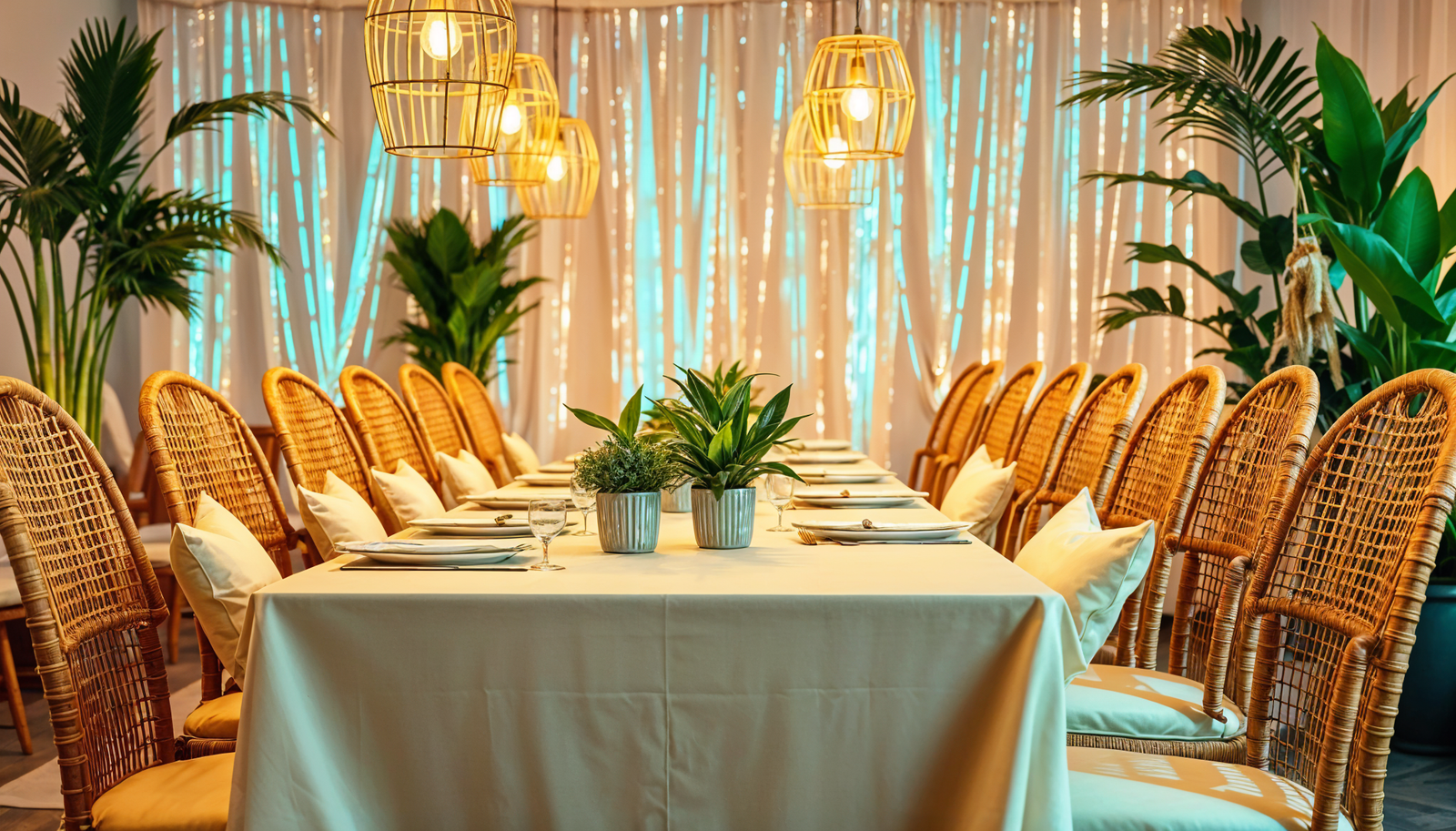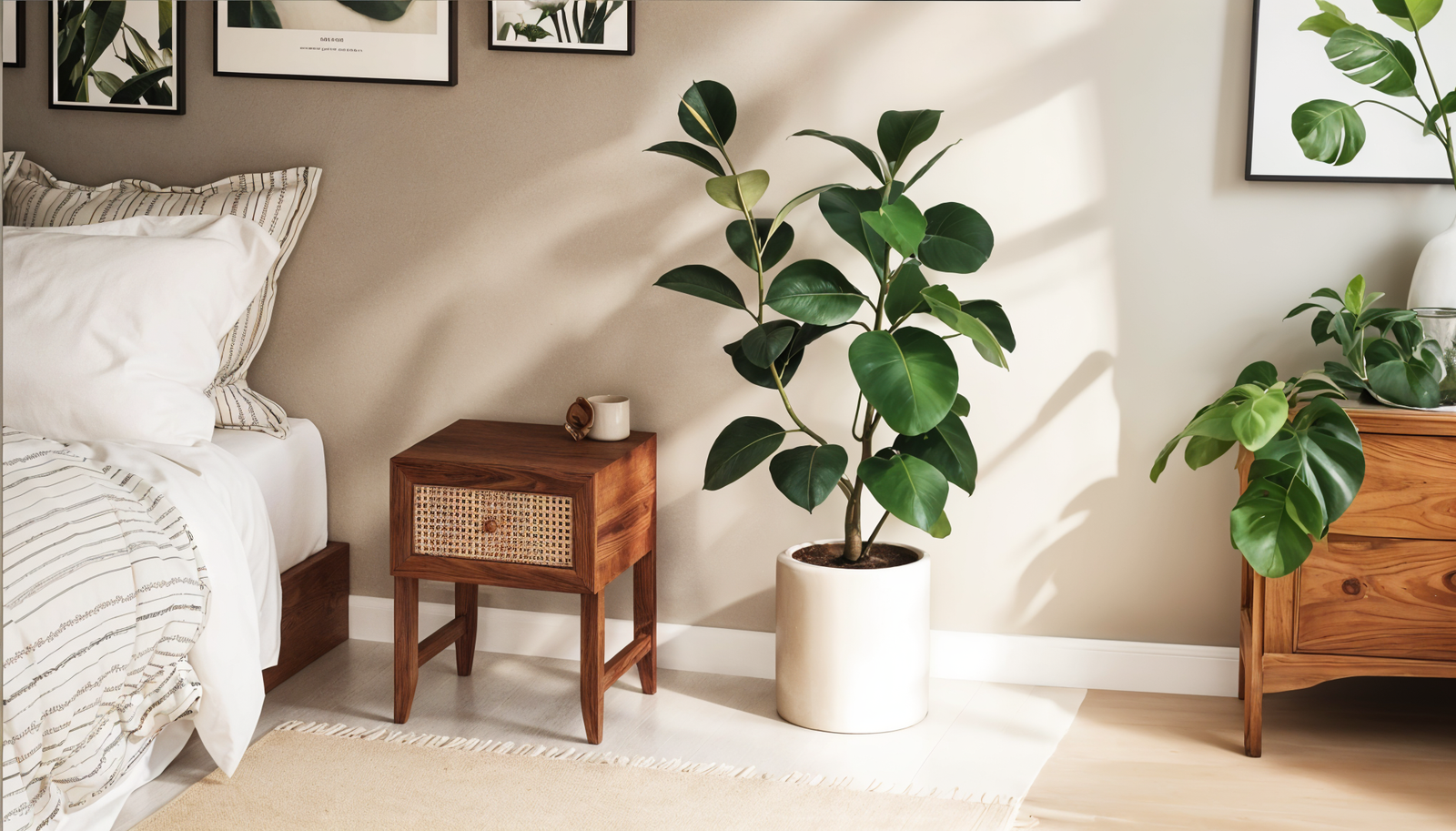🤍 Unmatched Quality, Authentic Craftsmanship
🤍 Unmatched Quality, Authentic Craftsmanship
🤍 Unmatched Quality, Authentic Craftsmanship
Japandi kitchen ideas bring together the best of Japanese and Scandinavian design, merging style and simplicity.
By combining clean lines, natural materials, and a minimalist aesthetic, a Japandi kitchen creates a harmonious and practical space.
In this article, we will explore key elements of Japandi kitchen design, including integrating clean lines and handcrafted details, choosing the right color palette, incorporating natural materials, selecting furniture, and styling the space.
We will also discuss the latest Japandi kitchen trends and provide tips on creating a timeless kitchen design.
Whether you're looking for inspiration or practical advice, these Japandi kitchen ideas will help you achieve a beautiful and functional kitchen that embodies the essence of Japandi style.

The Japandi kitchen aesthetic is a fusion of Japanese and Scandinavian design elements, creating a unique blend of East and West.
At its core, Japandi design emphasizes simplicity, functionality, and natural materials.

Japanese simplicity is characterized by clean lines, minimal clutter, and a focus on harmony and balance.
Scandinavian minimalism, on the other hand, embraces light, airy spaces, natural textures, and a cozy atmosphere.
By combining these two design philosophies, Japandi kitchens offer a serene and inviting space that blends style and simplicity seamlessly.
The Japandi concept brings together the elegance and refinement of Japanese design with the minimalistic charm of Scandinavian aesthetics.
It seeks to find common ground between the two, creating a harmonious and balanced approach to kitchen design.
In Japandi kitchens, every element is carefully curated to contribute to the overall aesthetic while also maintaining functionality.
Japanese simplicity is known for its clean lines, uncluttered spaces, and a focus on natural materials.
It emphasizes the beauty of simplicity and creates spaces that promote a sense of peace and tranquility.
On the other hand, Scandinavian minimalism embraces light and airy spaces, incorporating natural textures and a cozy atmosphere.
It prioritizes functionality and comfort without compromising on style.
When it comes to Japandi kitchen design, there are several key elements to consider.
These include clean lines, natural materials, minimalistic aesthetics, functional and practical layouts, and a balance between form and function.
By focusing on these key elements, you can create a Japandi kitchen that is both visually appealing and highly functional for everyday use.
In Japandi design, clean lines play a crucial role in creating a minimalistic and clutter-free aesthetic.
The seamless integration of clean lines contributes to the sleek and modern look of Japandi kitchens.
This design principle is championed by Mojo Boutique, a renowned brand in kitchen design, which understands the significance of clean lines for achieving a harmonious and visually appealing space.

Handcrafted details, on the other hand, add a touch of uniqueness, texture, and warmth to Japandi kitchens.
These one-of-a-kind elements can include handcrafted ceramics, woven cane accents, or custom woodwork.
By incorporating these handcrafted details into your Japandi kitchen, you infuse the space with a sense of authenticity and craftsmanship.
Integrating both clean lines and handcrafted details in your Japandi kitchen styling will result in a visually balanced and inviting space that embodies the essence of this design style.
It is through the seamless blending of minimalistic aesthetics with intricate handcrafted touches that the true beauty of Japandi kitchens is revealed.
| Clean Lines | Handcrafted Details |
|---|---|
| Minimalistic and clutter-free aesthetic | Unique textures and warm ambiance |
| Sleek and modern look | Authenticity and craftsmanship |
| Emphasizes harmony and balance | Infuses space with a personal touch |
By carefully integrating clean lines and handcrafted details in your Japandi kitchen styling, you can create a space that is not only visually stunning but also reflects your individual style and appreciation for the beauty of simplicity.
In a Japandi interior design, the color palette plays a significant role in setting the desired ambiance.
To achieve a soft and airy feel, incorporating pastel tones is essential.
Pastel colors, such as gentle blues, soft pinks, and pale greens, add a calming Japandi kitchen inspiration and serene atmosphere to your kitchen space.
These colors evoke a sense of tranquility and create a soothing environment that aligns with the Japandi aesthetic.
Another important aspect of the Japandi color palette is the balance between darker woods and light hues.
Darker wood tones, such as walnut or ebony, can add depth and richness to your kitchen design.
By incorporating these darker elements alongside lighter hues like white or light gray, you create contrast and visual interest.
This balance allows for a harmonious blending of Japandi kitchen colors, reflecting the natural harmony found in Japanese and Scandinavian design.
| Japandi Kitchen Colors | Description |
|---|---|
| Soft Pastels | These gentle colors create a calming and serene atmosphere in your Japandi kitchen. |
| Darker Woods | Adding darker wood tones adds depth and contrast to the overall color palette. |
| Light Hues | Lighter colors, like white or light gray, balance out the darker elements, creating a harmonious blend. |
Natural materials play a significant role in Japandi kitchen decor.
By incorporating elements such as wood, stone, bamboo, and rattan, you can add warmth and a connection to nature.
These natural materials create a sense of tranquility and provide a grounding element in your modern Japandi kitchen design.
In Japandi design, the fusion of function and form is a key principle that extends to the selection of kitchen furniture.
When choosing furniture for your Japandi kitchen, it's important to consider both aesthetics and functionality.
Opt for pieces that not only look beautiful but also serve a practical purpose in your daily cooking and dining activities.
One of the main characteristics of Japandi kitchen furniture is its clean lines.
Look for pieces with minimalistic Japandi kitchen designs that feature straight edges and smooth surfaces.
These clean lines not only contribute to the overall simplicity of Japandi design but also create a sense of calm and order in the space.

When it comes to materials, durability is key in Japandi kitchens.
Choose furniture made from high-quality, long-lasting materials such as solid wood, bamboo, or metal.
These materials not only add a touch of natural beauty to your kitchen but also ensure that your furniture will withstand the test of time.
Another important aspect to consider is the overall layout and arrangement of furniture in your Japandi kitchen.
Focus on creating a functional and efficient space by strategically placing furniture to optimize workflow.
Keep in mind that Japandi interior design values simplicity and minimalism, so avoid cluttering the space with unnecessary furniture or decorative items.
By carefully selecting Japandi kitchen furniture that balances function and form, you can create a cohesive and visually pleasing space that embodies the essence of Japandi design.
Personalizing your Japandi kitchen is the key to creating a homely and inviting space that reflects your unique taste and lifestyle.
By adding accessories with purpose and personality, you can elevate the aesthetics of your kitchen while ensuring it remains functional for your daily kitchen activities.
Make your Japandi kitchen truly yours by incorporating elements that reflect your personality and preferences.
Consider adding personal touches such as artwork, photos, or heirlooms that hold sentimental value.
These items can add a sense of warmth and nostalgia to your kitchen, making it a place that feels truly personal and inviting.
When accessorizing your Japandi kitchen, choose items that not only enhance the aesthetics but also serve a purpose in your daily kitchen activities.
Opt for functional and beautiful kitchen tools, utensils, and storage solutions that align with the Japandi design philosophy.
By selecting accessories with intention, you can maintain a clutter-free and organized kitchen while infusing it with your own personal style.
Japandi kitchen design is not static, and there are always new trends emerging within this aesthetic.
Currently, there is a focus on balancing modern elements with organic shapes.
This trend combines sleek and contemporary designs with natural curves and imperfect textures, embracing the principles of wabi-sabi.
By staying updated with Japandi kitchen trends, you can infuse your space with fresh ideas and keep your kitchen design current.
A neutral color base is essential in creating a Japandi kitchen.
By selecting the right colors, you can achieve a harmonious and balanced aesthetic that embodies the essence of Japandi style.
In this section, we will explore the use of earth tones as the foundation of the Japandi palette and the importance of utilizing black as a striking accent color.
Earth tones play a crucial role in Japandi kitchen design, creating a sense of natural sophistication and warmth.
Warm browns, soft beiges, and muted greens are commonly used to establish a neutral color base in modern Japandi kitchen design.
These earthy hues evoke a serene and calming atmosphere, reminiscent of the natural world.
Whether applied to cabinetry, countertops, or walls, earth tones provide a solid foundation for the Japandi aesthetic.
In addition to earth tones, black can be incorporated as a striking accent color to add contrast and depth to your Japandi kitchen.
Black accents can take various forms, such as hardware, light fixtures, or kitchen accessories.
The boldness of black creates visual interest and highlights specific elements within the kitchen.
When used sparingly and strategically, black accents elevate the overall design and create a focal point in the space.
By curating a neutral color base with carefully chosen accent colors like black, you can achieve a cohesive and balanced Japandi kitchen aesthetic.
The combination of earth tones and black accents adds depth, warmth, and visual appeal to your kitchen design, resulting in a space that is both timeless and visually pleasing.
Now that you have read the above article, maybe you still have a couple of questions on this topic, so we will answer these questions below.
Japandi kitchen design is a fusion of Japanese and Scandinavian design elements, combining style and simplicity.
It incorporates clean lines, natural materials, and a minimalist aesthetic to create a harmonious and practical kitchen space.
Personalize your Japandi kitchen by incorporating elements that reflect your taste and lifestyle.
Accessorize with intention, choosing items that enhance both aesthetics and functionality in your daily kitchen activities.
The current trend in Japandi kitchen design focuses on balancing modern elements with organic shapes, embracing the principles of wabi-sabi for a sleek and contemporary look.
Earth tones, such as warm browns, soft beiges, and muted greens, form the foundation of the Japandi palette. Black can also be used as a striking accent color to add contrast and depth.
The seamless integration of Japanese simplicity and Scandinavian minimalism has given birth to a style that embodies both style and simplicity.
By drawing inspiration from Japandi kitchen ideas, you can create a space that harmoniously blends modernity with natural elements.
Implementing Japandi principles in your kitchen design can result in a timeless and functional space.
The use of clean lines creates a sense of minimalism and order, while natural materials provide warmth and a connection to nature.
A well-curated color palette sets the foundation for a harmonious aesthetic, and personal touches add a sense of individuality.
By implementing Japandi principles, you can transform your kitchen into a true centerpiece of your home.
The beauty of Japandi design lies in its ability to create a space that is both visually appealing and highly practical.
So, whether you're seeking inspiration or looking to revamp your kitchen, embrace Japandi design and unlock the potential of a beautiful and timeless kitchen.


